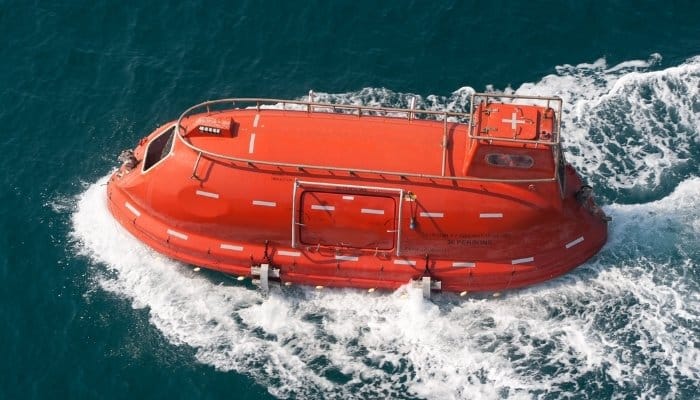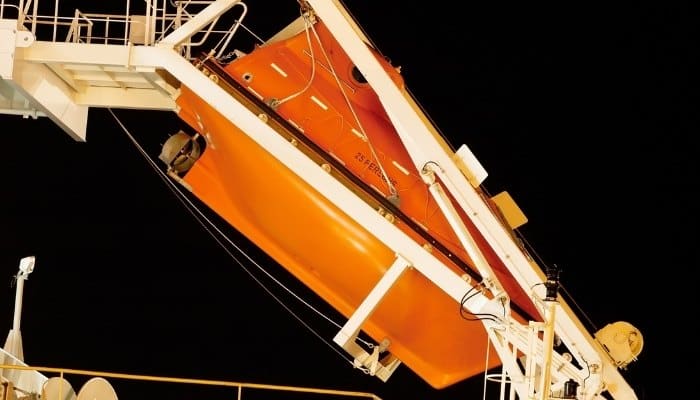

With the manpower having reduced to a fundamental minimum on board ships, it is all the more imperative to keep safety at sea as the prime concern for the crew.
Regular maintenance of lifeboats, life rafts and other such safety entities must be done thoroughly, for it is kept in place for the benefit of the workforce. After all, at the time of distress, it the survival craft that is going to get us to safety.
Although it might seem cumbersome after a day’s work, drills on ships are kept in place to ensure that the entire workforce is thorough with each and every safety procedure with regard to evacuation or any other emergency.
It might sound cliché, but it is only with regular practice of the drills that the operation of the lifeboat/rescue boat and life rafts becomes a lot easier. I’m sure we will all agree that after repeated drills, every nook and corner of the survival craft comes easily to the memory.


Keeping all of the above in mind, following are the 7 points to remember with regard to manning of survival craft and supervision:
1. The number of trained personnel for the purposes of mustering and otherwise must be sufficient. The same is important in assisting the untrained persons. Assigning the right spots at the muster station helps demarcate the new from the seasoned, making it an easier way to monitor the untrained persons. No one gets on ship knowing everything and therefore it is important that the ones that are no so thorough are trained without judgment and with full effort.
Read – Measures To Stop Accidents On Lifeboats
2. The number of crew operating the craft and its arrangements for embarkation and launching must be sufficient. As it is we have a set number of people with not much manpower to spare. At the time of crisis, the last thing required would be paucity in the number of persons associated with a certain job. For example, you cannot have the embarkation ladder setup by a single person.


3. A certified/authorized person, preferably a deck officer (as is the case usually) must be assigned as the in-charge of the survival craft(s) with the duties designated to each member of each station. Assigning the duties is a task given to the third mate which should be undertaken keeping in mind each member’s strengths and knowhow. The person in charge should also be vehement in his explanation at every drill so as to avoid any confusion later on. For example, a lot of people mention the ‘painter’ when asked but don’t really know what it is. Every aspect should be pointed out properly at least once.
4. The officer in charge of a respective station must have a list of the individuals that belong to that station along with their assigned duties. To ensure that the crew is well acquainted with their duties, the in charge must explain each person their duties and ensure that the individual is thorough with it. A crewmember, say an OS, might not be familiar with the duty of fetching the SART from the bridge. Such things should be kept in mind when assigning duties.
5. Qualified personnel capable of handling communication equipment such as the radiotelegraph, handheld VHFs and whatever else might be in place.
6. Power driven crafts must have a capable individual who can handle and operate the engine as well as possess a basic knowhow of carrying out minor adjustments to the machinery. In any case, every craft will have a certified engineer with a robust knowhow of the craft’s engine.
7. The distribution of personnel between (or among) the survival crafts must be done in a way that each station has a fair share of qualified and capable individuals who are trained in the handling and operation of the survival craft. It should not be the case that the one station is ripe with all the able individuals while the other isn’t so. The Master, via the third mate, should ensure that this distribution is maintained. Experience beats everything else during the time of crisis.
The Safety Officer onboard, being the overall safety in charge (the chief engineer in my case), should strive to put a very comprehensive training programme in place, ensuring that the freshers (e.g. Cadets, Trainee OS) as well as the seasoned seafarers understand the importance of safety as a whole. Safety meetings along with drills should be chalked out keeping in mind that every individual must have the concept of safety being paramount embedded in them.










We believe that knowledge is power, and we’re committed to empowering our readers with the information and resources they need to succeed in the merchant navy industry.
Whether you’re looking for advice on career planning, news and analysis, or just want to connect with other aspiring merchant navy applicants, The Marine Learners is the place to be.